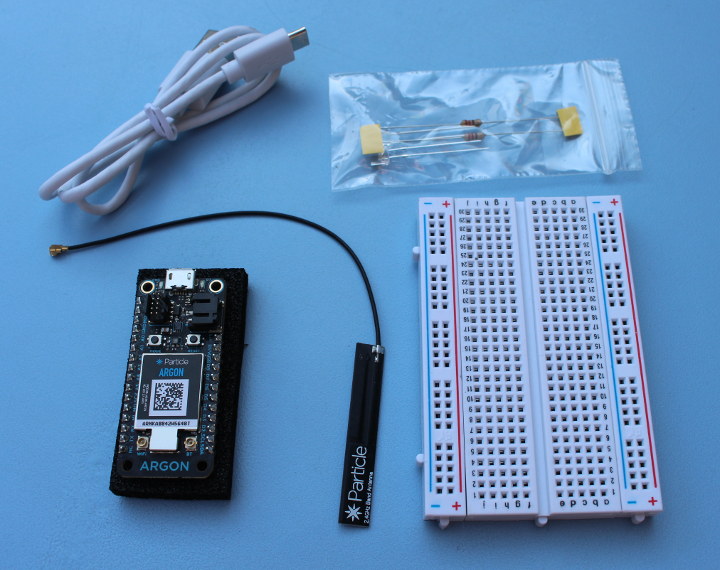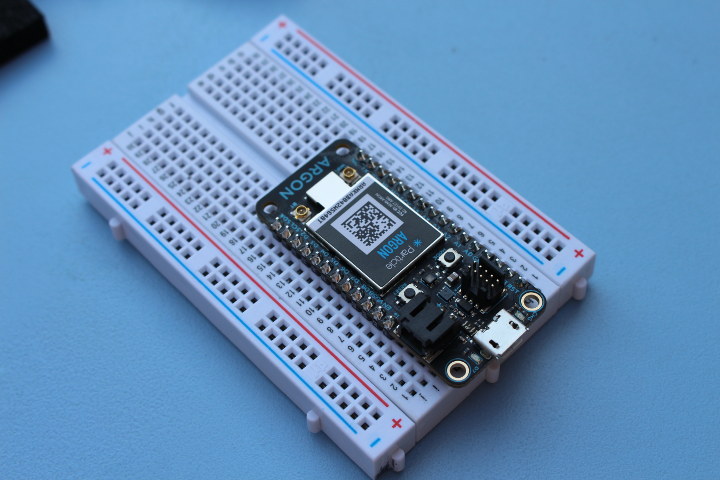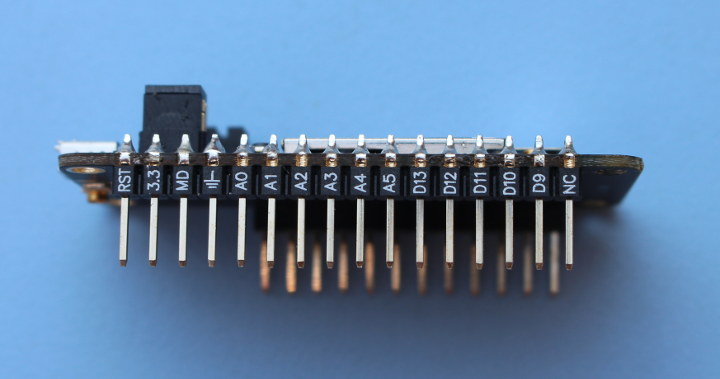Back in February of this year, Particle introduced three low cost IoT development boards based on Nordic Semi nRF52840 wireless chip supporting “Particle Mesh” networking based on the 802.15.4 radio in the chip and OpenThread implementation of Thread IoT communication protocol.
The company recently announced they were now shipping the kits pre-ordered earlier this year, and released two IoT development tools based on Node-RED and Visual Studio Code. Particle contacted me as well as to find out whether I was interested in reviewing their latest WiFi / Bluetooth / Mesh kit, and I’ve just received the bundle, which comes with a bunch of items, so I decided to write an unboxing post first to have a first look at the hardware, before playing with it in one or two weeks.
Particle Mesh IoT Development Kit Bundle Unboxing
That’s what I got from UPS…
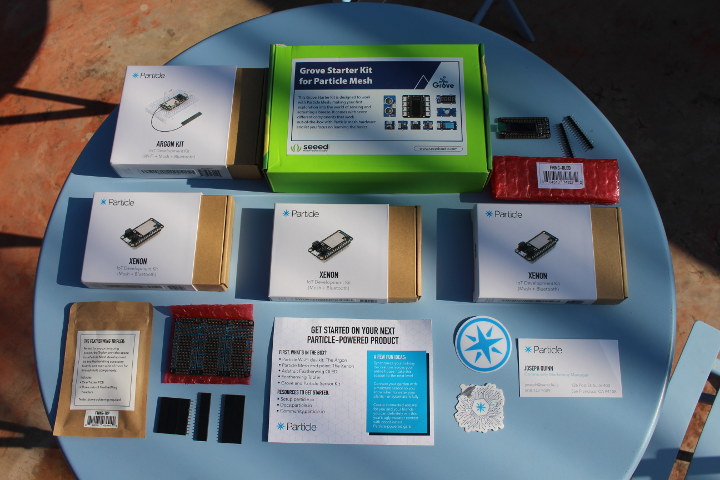
From top left to bottom right:
- The Argon kit (ESP32 WiFi + Bluetooth + Mesh)
- A Grove and Particle Sensor Kit with various modules and a shield
- An Adafruit Featherwing OLED display and headers
- Three Xenon (Bluetooth + Mesh) end points that I understand will be controlled with the Argon board acting as a WiFi / Mesh gateway
- Featherwing Triplers with headers to be used for prototyping after soldering the board and headers.
- A Getting Started Card
- Some stickers and Joseph’s business card who is in charge of marketing for the developer’s community
That should be fun to play with. I’ll have a closer look at the Argon & Xenon kits, and the Grove Starter kit below.
Argon Kit
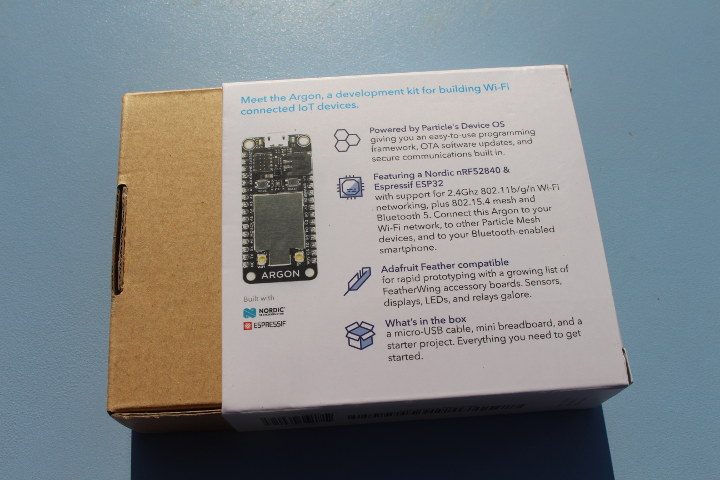
Argon board is based on Nordic Semi nRF52840 WiSoC for Bluetooth (setup only), and Mesh connectivity, as well as ESP32-S0WD single core ESP32-D0WD WiFi & Bluetooth SoC (See comments), although I understand only WiFi will be used in this case.
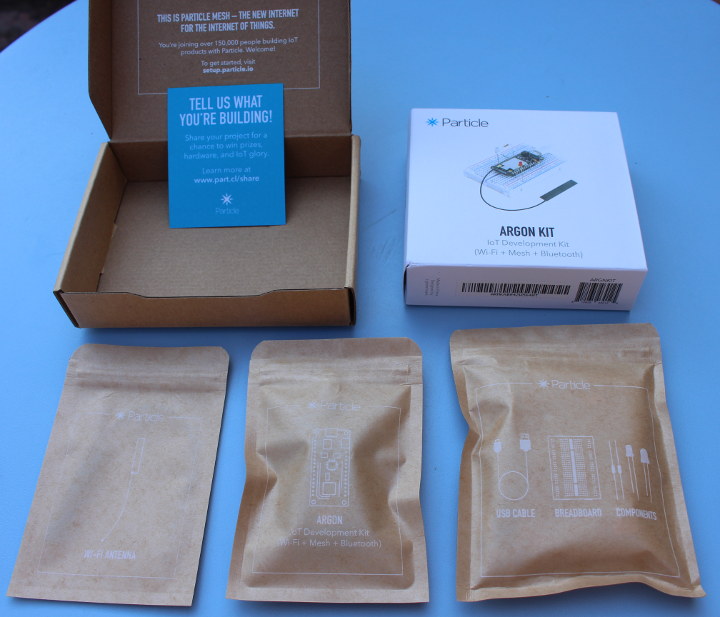
Everything is neatly packaged inside the box with separate zip bags for the WiFi antenna, the board itself, and other accessories which include a micro USB cable, some LEDs and resistors, as well as a breadboard.
The board follows Adafruit’s Feather form factor and pinout, and includes a microUSB port for port and programming, mode and reset push buttons, u.FL connectors for WiFi and optional Bluetooth antennas, a JTAG/SWD header, a LiPo battery connector, and Blue markings for the two row of I/O headers.
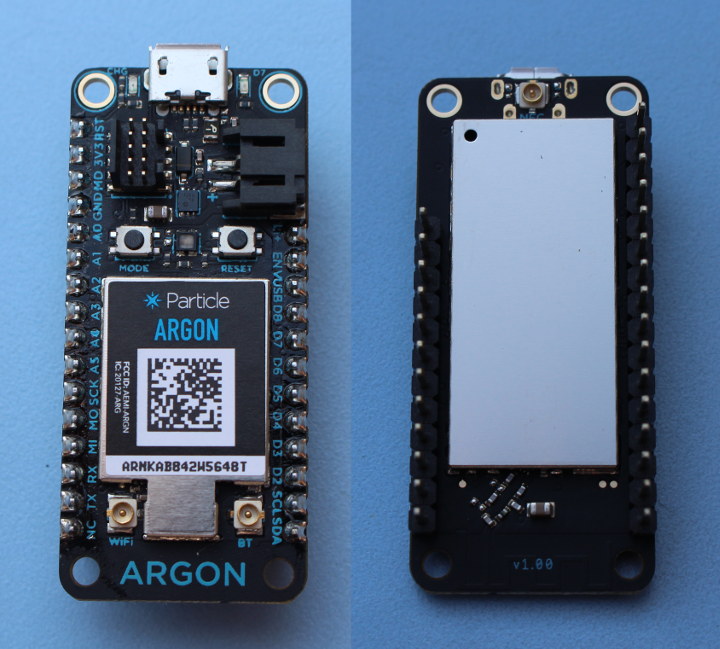 The back of the board includes a shield, and another u.FL antenna connect for NFC. The board fits nicely in the breadboard, with three rows (2+1) accessible on the sides of the board.
The back of the board includes a shield, and another u.FL antenna connect for NFC. The board fits nicely in the breadboard, with three rows (2+1) accessible on the sides of the board.

Xenon Board
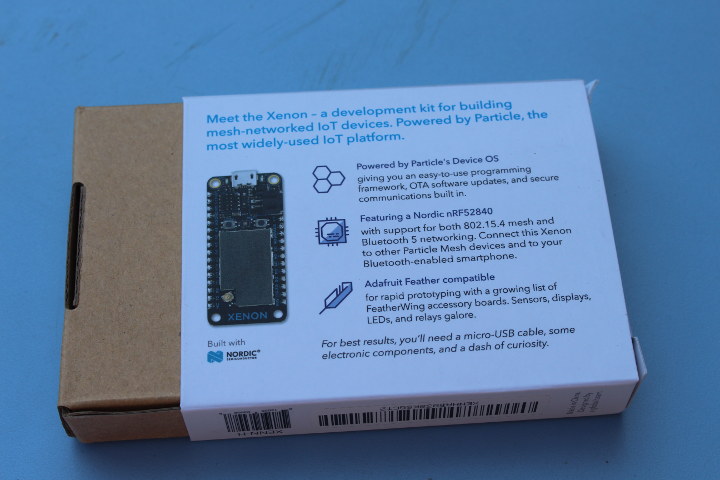
The Xenon board is based on nRF52840 WiSoC and supports both Bluetooth 5 (for setup only), and Particle Mesh networking. It’s also Adafruit’s Feather compatible enabling the use of FeatherWing accessories boards.
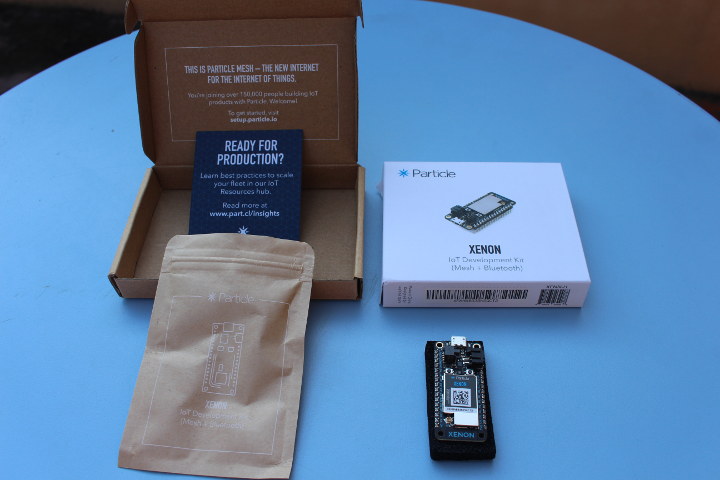 There’s really nothing but the board itself inside the package.
There’s really nothing but the board itself inside the package.
The board design looks almost identical to the Argon board, with a micro USB port for debugging and port, a JTAG/SWD header, a battery connector, the mode & reset buttons, same I/O headers, but of course only one u.FL connector for Bluetooth/Mesh on the top since the board does not support WiFi. The external Bluetooth antenna is optional since the boards include an on-board 2.4GHz PCB antenna for Thread/BLE.
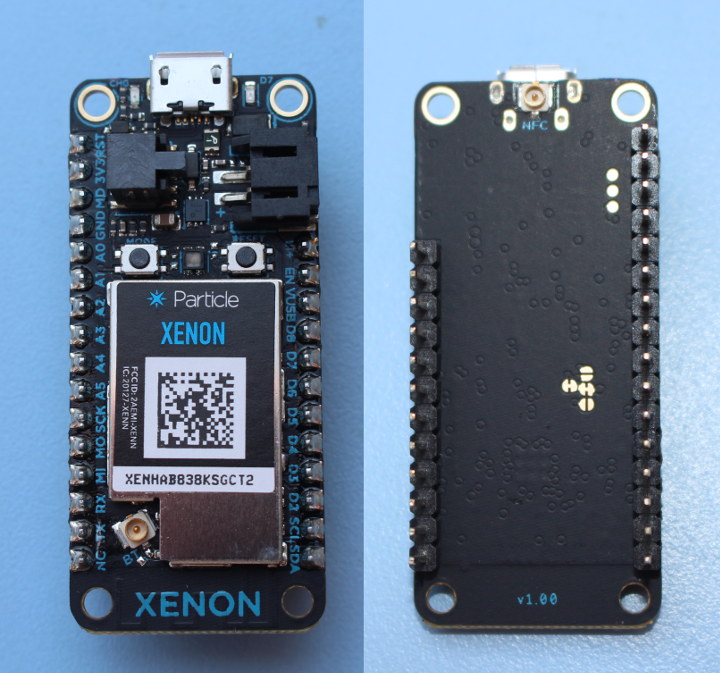
The other side of the board is mostly bare, with just the u.FL connector for an NFC antenna. Both Argon and Xenon headers include convenient I/O markings on the side of the board as well.
That’s all for today, and I’ll have to study the documentation and getting started guides to review the board and better understand how Particle Mesh technology works.
If you are interested in the Particle Mesh IoT development kits bundle I’ve received, the company does not appear to sell it directly, but I could add one Argon Kit ($35), 3x Xenon boards ($15 x 3), a Grove Starter Kit for Particle Mesh ($35), Adafruit FeatherWing OLED ($14.95), and a FeatherWing Tripler ($8.50) in their online store (link now dead) for a total of $138.45.
Continue reading Particle Mesh Networking Review – Part 2: Getting Started Guide with Argon & Xenon

Jean-Luc started CNX Software in 2010 as a part-time endeavor, before quitting his job as a software engineering manager, and starting to write daily news, and reviews full time later in 2011.
Support CNX Software! Donate via cryptocurrencies, become a Patron on Patreon, or purchase goods on Amazon or Aliexpress


